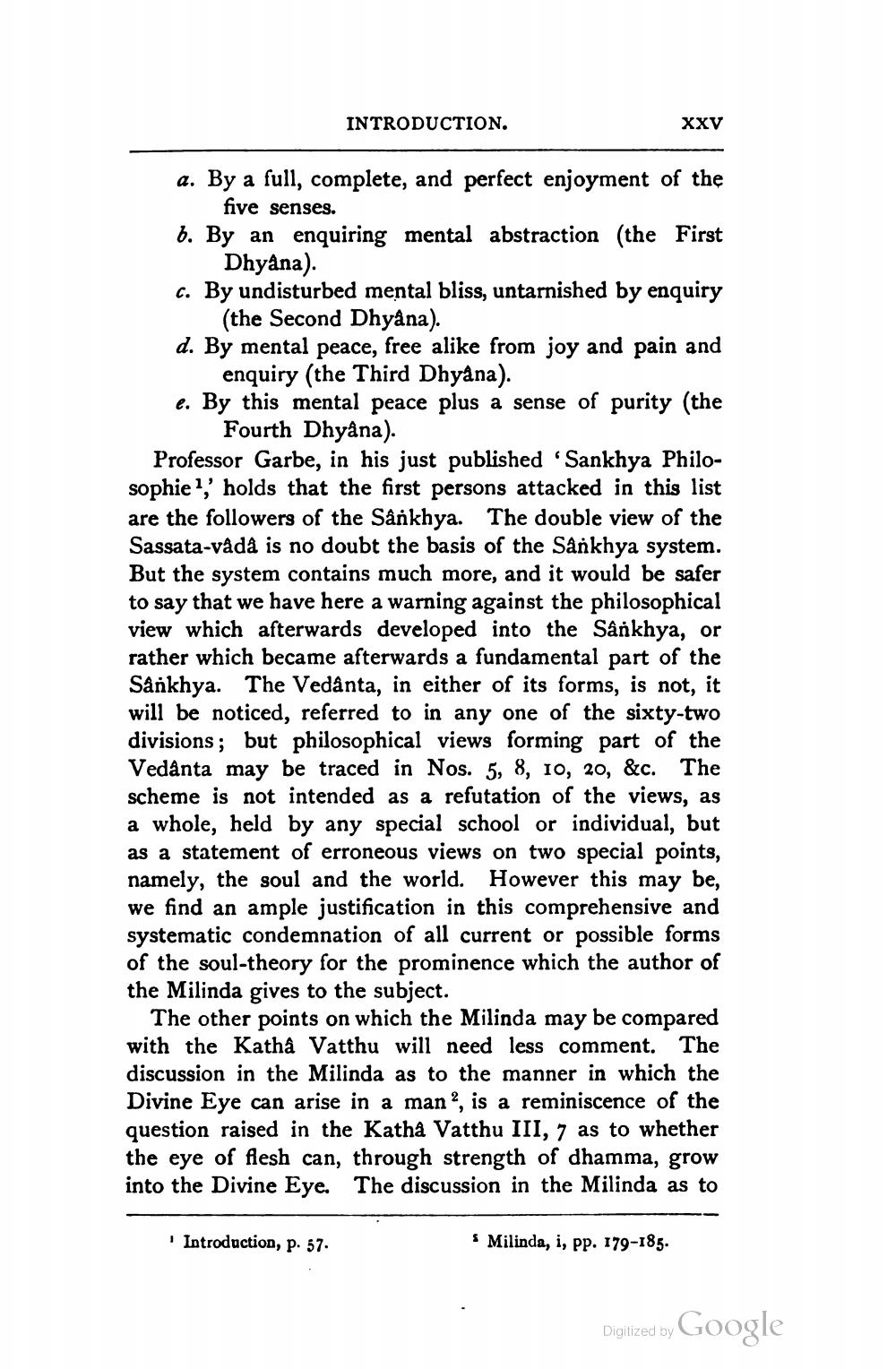________________
INTRODUCTION.
XXV
a. By a full, complete, and perfect enjoyment of the
five senses. b. By an enquiring mental abstraction (the First
Dhyana). C. By undisturbed mental bliss, untarnished by enquiry
(the Second Dhyana). d. By mental peace, free alike from joy and pain and
enquiry (the Third Dhyana). e. By this mental peace plus a sense of purity (the
Fourth Dhyana). Professor Garbe, in his just published 'Sankhya Philosophie ?,' holds that the first persons attacked in this list are the followers of the Sankhya. The double view of the Sassata-vådå is no doubt the basis of the Sankhya system. But the system contains much more, and it would be safer to say that we have here a warning against the philosophical view which afterwards developed into the Sânkhya, or rather which became afterwards a fundamental part of the Sankhya. The Vedanta, in either of its forms, is not, it will be noticed, referred to in any one of the sixty-two divisions; but philosophical views forming part of the Vedanta may be traced in Nos. 5, 8, 10, 20, &c. The scheme is not intended as a refutation of the views, as a whole, held by any special school or individual, but as a statement of erroneous views on two special points, namely, the soul and the world. However this may be, we find an ample justification in this comprehensive and systematic condemnation of all current or possible forms of the soul-theory for the prominence which the author of the Milinda gives to the subject.
The other points on which the Milinda may be compared with the Katha Vatthu will need less comment. The discussion in the Milinda as to the manner in which the Divine Eye can arise in a man?, is a reminiscence of the question raised in the Katha Vatthu III, 7 as to whether the eye of fresh can, through strength of dhamma, grow into the Divine Eye. The discussion in the Milinda as to
Introduction, p. 57.
Milinda, i, pp. 179-185.
Digitized by Google




